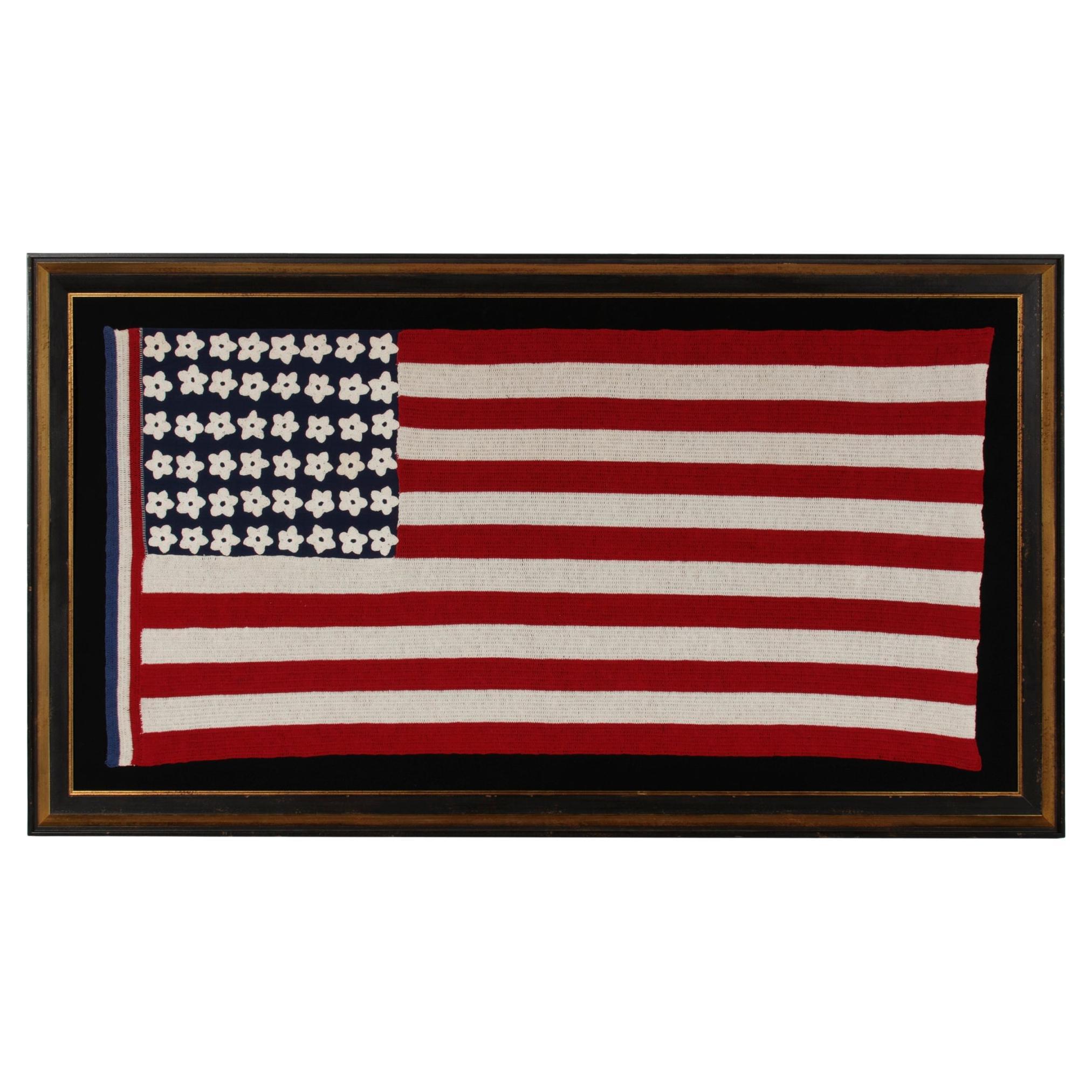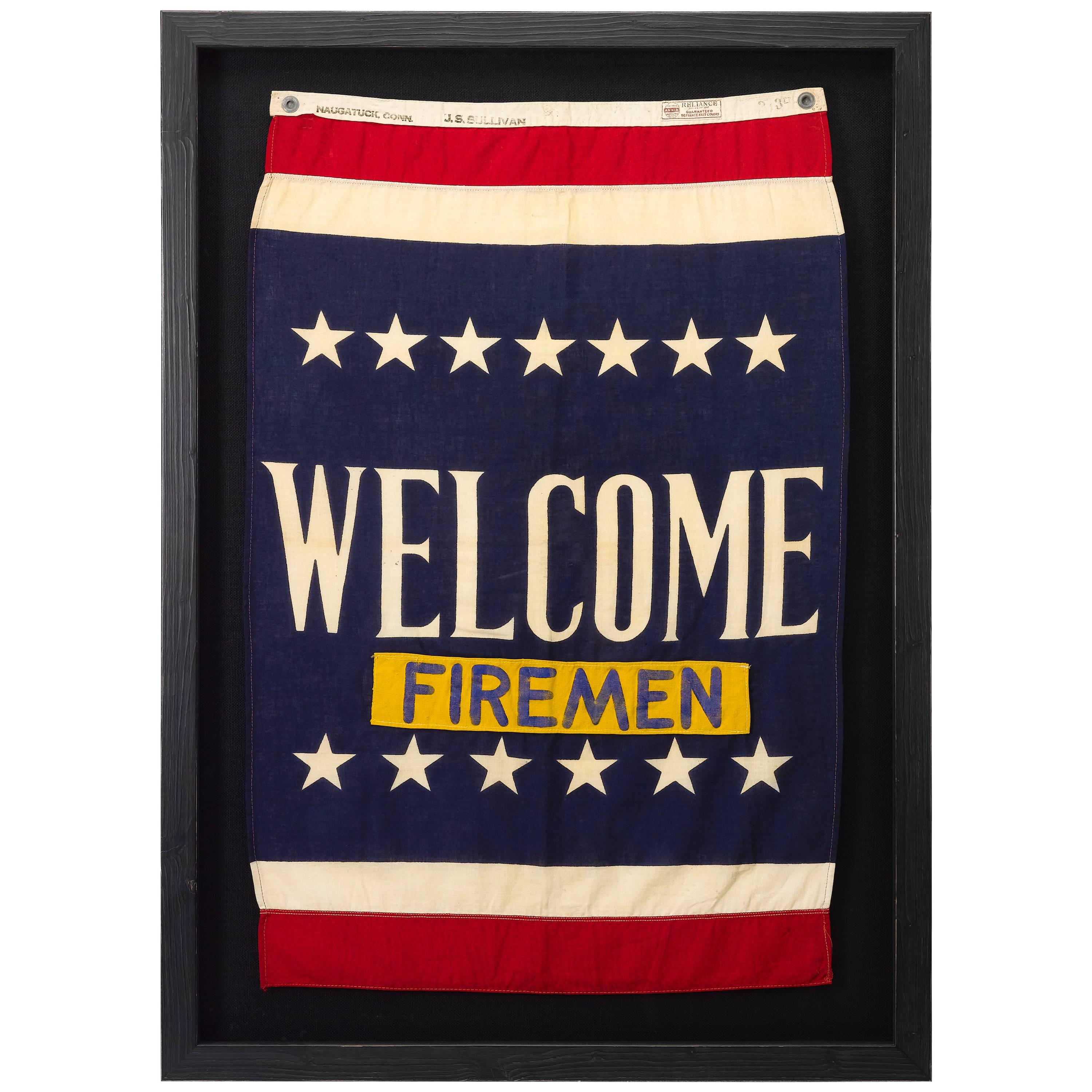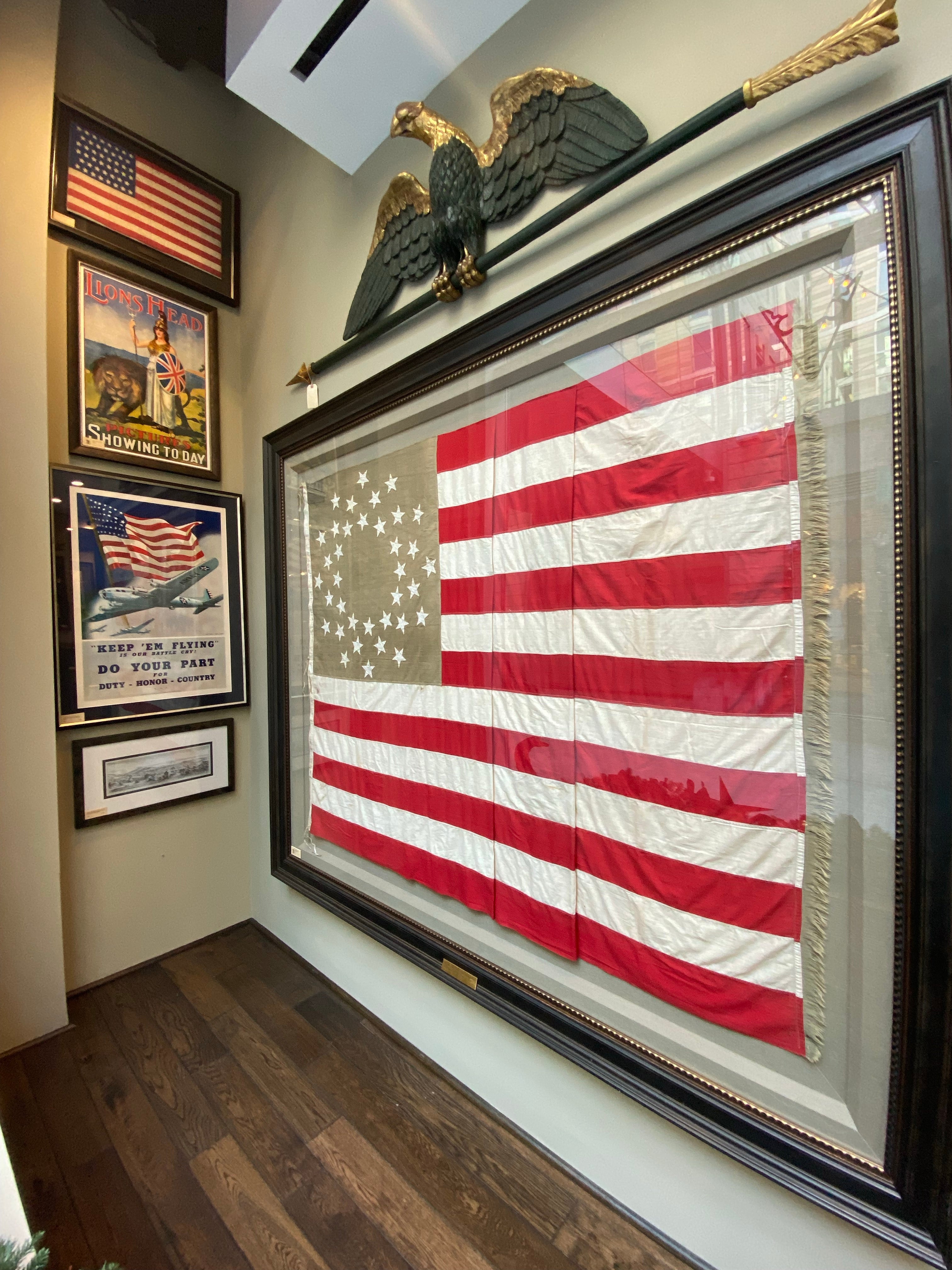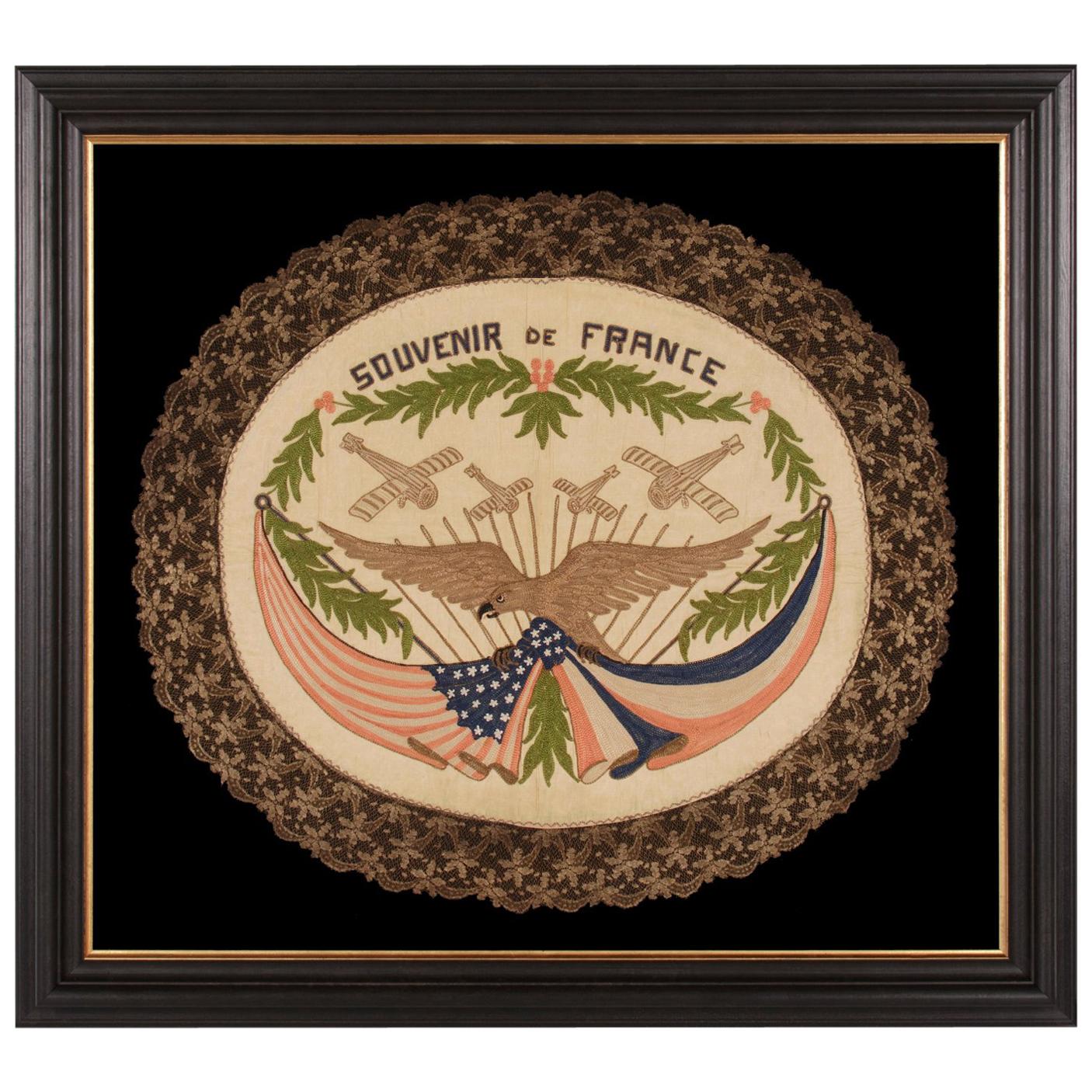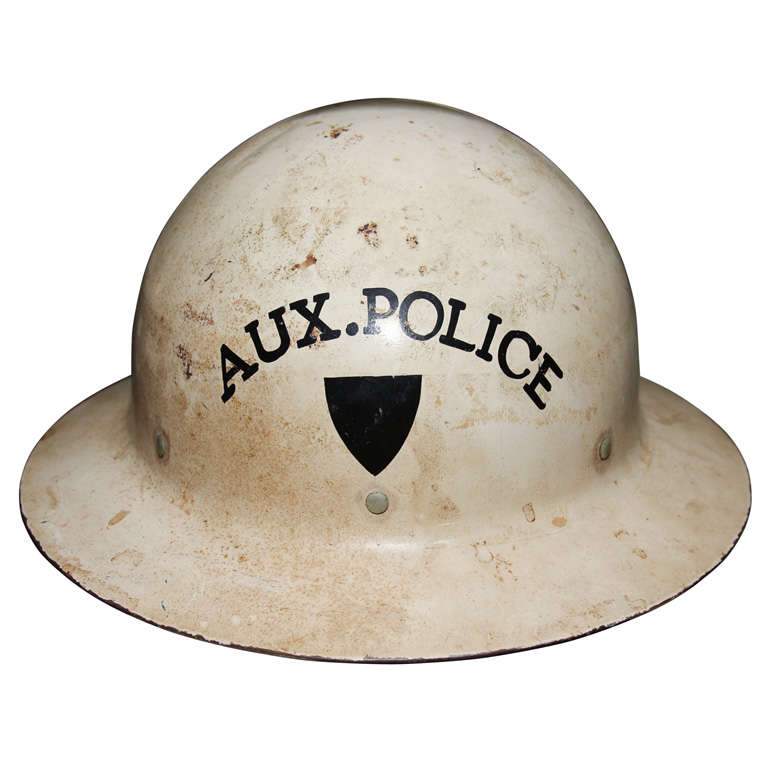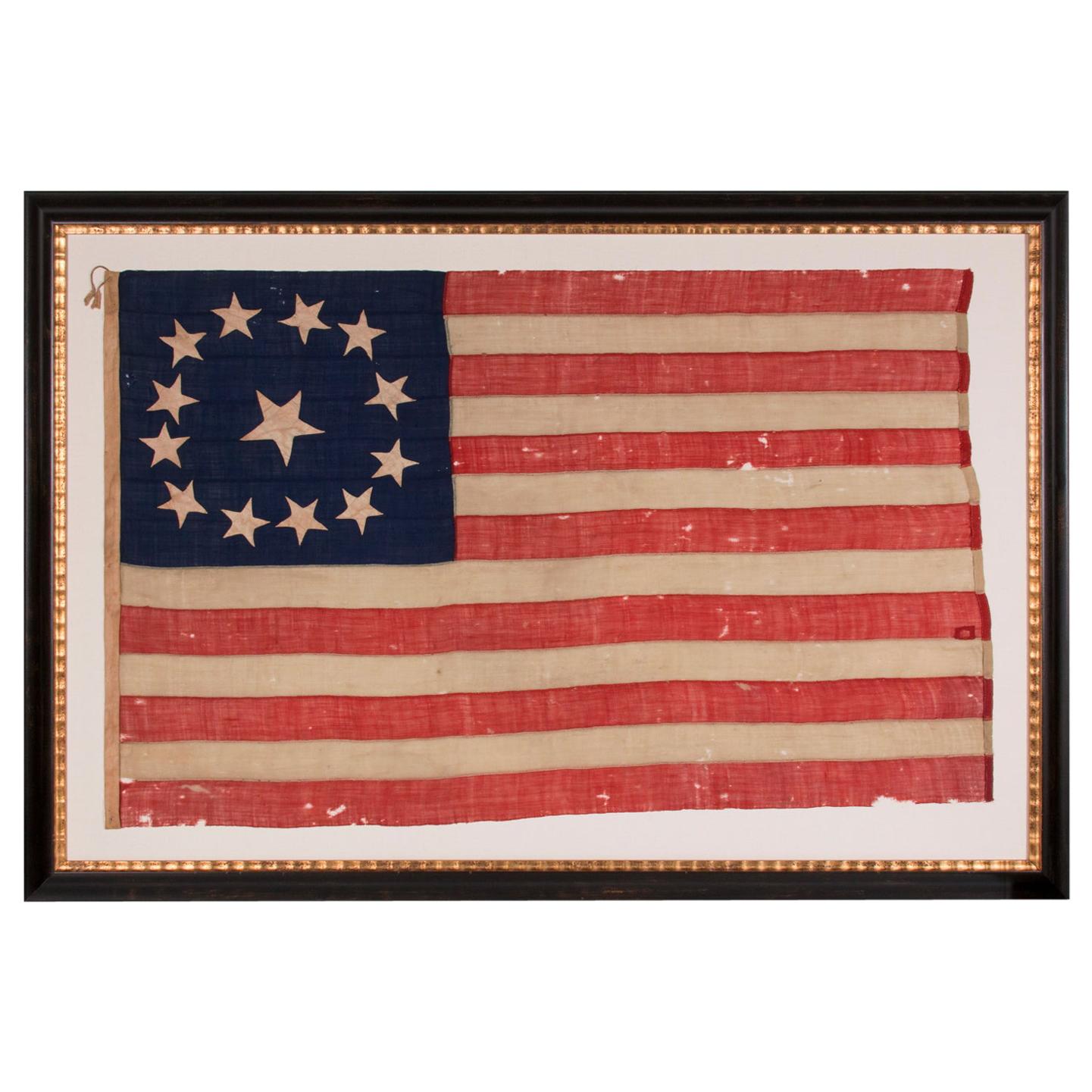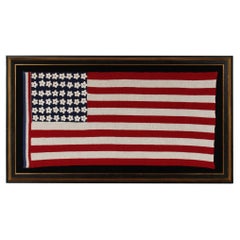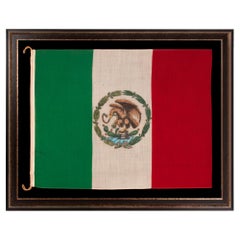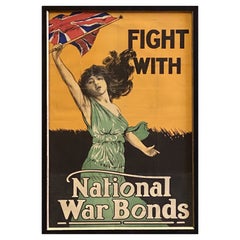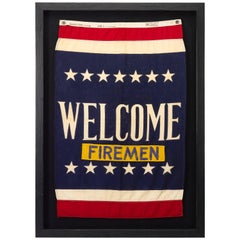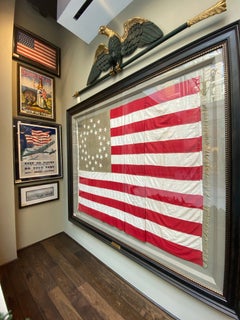
The Bleu, Blanc & Rogue: A French National Flag Of The WWi-WWII Era
View Similar Items
Want more images or videos?
Request additional images or videos from the seller
1 of 3
The Bleu, Blanc & Rogue: A French National Flag Of The WWi-WWII Era
About the Item
- Dimensions:Height: 36 in (91.44 cm)Width: 59 in (149.86 cm)Depth: 0.1 in (2.54 mm)
- Period:
- Date of Manufacture:1915-1945
- Condition:See Item Description.
- Seller Location:York County, PA
- Reference Number:1stDibs: LU84971172312
About the Seller
5.0
Recognized Seller
These prestigious sellers are industry leaders and represent the highest echelon for item quality and design.
Established in 1991
1stDibs seller since 2008
61 sales on 1stDibs
Typical response time: 10 hours
More From This SellerView All
- 48 Star Crocheted Homemade American Flag, WWII Era, 1941-1945Located in York County, PA48 star, crocheted, antique american flag of the wwii era (1941-1945), a beautiful, homemade example, with a red, white, & blue hoist and flower-like stars: Crocheted American fla...Category
Mid-20th Century American Political and Patriotic Memorabilia
MaterialsCotton
Price Upon Request - Mexican National Flag, Hand-Panted, ca 1917-1934Located in York County, PAMEXICAN NATIONAL FLAG IN THE DESIGN USED BY REVOLUTIONARIES FROM 1917 - 1934, THE FIRST PERIOD IN WHICH THE EAGLE WAS ILLUSTRATED IN SIDE VIEW; MADE OF GABARDINE WOOL AND WOOL BUNTING, WITH RICH COLORS AND A HAND-PAINTED DEVICE, USED IN THE LATTER YEARS OF THE ERA OF PONCHO VILLA (b. 1878, d. 1923) Flag of Mexico, in the design adopted in 1917 by the revolutionary government, in use until a re-design of the seal took place in 1934. This covered part of the principal era of Francisco "Poncho" Villa. The field is comprised of the expected vertical bars of green, white, and red, with the charge on the white bar. This is the first period in which the device consisted of an eagle in side view, instead of with breast forward. Perched on a rock that protrudes from a body of water, with prickly pear cactus growing outward and upward from each side, the war-like bird grips a rattlesnake in its proper right talon and beak. The image is cradled within an open wreath of oak and laurel branches, tied with a bow at their juncture, in the bottom center. The bow is striped with the national colors. One year before this flag was accepted, in 1916, U.S. President Woodrow Wilson sent General John Pershing to capture Poncho Villa, whose loyalty shifted as he attempted to gain power. The chase ended abruptly in 1917, when the U.S. entered WWI (U.S. involvement 1917-1918). It was in this year that the U.S. recognized the Carranza government of Mexican Revolutionaries...Category
Mid-20th Century Mexican Political and Patriotic Memorabilia
MaterialsCotton
Price Upon Request - 36 Star American Flag, Civil War Era, Nevada StatehoodLocated in York County, PA36 Stars In The "Great Star" Or "Great Luminary" Pattern On A Civil War Era Flag With A Dusty Blue Canton And A Section Of One Stripe Souvenired, 1864-67, Nevada Statehood 36 star American national flag of the Civil War era, entirely hand-sewn and with some rare and beautiful features. The stars are arranged in a rendition of what is known as the Great Star or Great Luminary configuration, a large star made out of smaller stars. With no official star pattern before 1912, their design was left up to the artistic liberties of the flag-maker. Strikingly visual, the Great Star is both scarce and coveted by collectors. The 36th state, Nevada, entered the Union during the Civil War on October 31st, 1864. The last Confederate general surrendered on May 26th, 1865. The 36 star flag became official on July 4th of that year, but makers of printed flags would have begun adding a 36th star to their flags in 1864, even before the addition of the new state occurred. Lincoln pushed Nevada through just 8 days before the November election. Nevada’s wealth in silver was attractive to a nation struggling with the debts of war and increased support for the Republican ticket. The 36 star flag was replaced by the 37 star flag in 1867, with the addition of Nebraska. Adding to the flag's appeal is its small scale across those with of piece-and-sewn construction. During the 19th century, sewn flags (as opposed to those that were printed on cloth) were typically eight feet long and larger. This is because they were important in their function as signals, meaning that they needed to be seen and recognized from great distance. A flag that was six feet in length was considered small and production of flags smaller than this was extremely limited. Even infantry battle flags were approximately six by six and-one-half feet, about the size of an average quilt of the same period. As time passed, circumstances changed and sewn flags began to find more of a decorative purpose. Smaller flags are more scarce and far easier to frame and display. The Great Star configuration appears to have come about shortly after the War of 1812, when Congressman Peter Wendover of New York requested that Captain Samuel Reid, a War of 1812 naval hero, create a new design that would become the third official format of the Stars & Stripes. A recipient of the Congressional Medal of Honor, Reid became harbor master of New York following the war. During his lifetime, he created many innovations in signal use, including a system that could actually send messages from New York to New Orleans by sea in just two hours. Use as a Naval signal had been the primary reason for the initial creation of an American national flag in 1777, but since there was no official star design, the appearance of our flag varied greatly. Reid’s primary concern centered on both consistency and ease of recognition. His hope was as more and more states joined the Union and more and more stars were added to the flag, that it would remain easily identified on the open seas. In 1818, Reid suggested to Congress that the number of stripes permanently return to 13 (reduced from 15) and that the stars be grouped into the shape of one large star. Reid’s proposal would have kept the star constellation in roughly the same format, in a pattern that could be quickly identified through a spyglass as the number of states grew. His concept for the stripes was ultimately accepted, but his advice on the star pattern was rejected by President James Monroe, due to the increased cost of arranging the stars in what would become known as the “Great Star”, “Great Flower”, or “Great Luminary” pattern. Monroe probably didn’t wish to impose this cost on either the government or civilians, so he suggested a simple pattern of justified rows. Never-the-less, the Great Star was produced by anyone willing to make it and its rarity today, along with its beauty, has driven the desirability of American flags with this configuration. The canton and stripes of the flag are made of fine merino wool. Note how the canton has faded to a dusty seafoam blue, which is endearingly attractive. The stars of the flag are hand-sewn and single-appliquéd. This means that they were applied to one side of the canton, then the blue fabric was cut from behind each star, folded over, and under-hemmed, so that one star could be viewed on both sides of the flag. I always find single-appliquéd stars more interesting, not only because they are evidence of a more difficult level of seam-work and stitching, but also because they are more visually intriguing. The two visible rows of hand-stitching emphasize their hand-sewn construction, which is one reason why flags with single-appliquéd stars often appeal to connoisseurs of early American textiles...Category
Antique 1860s American Political and Patriotic Memorabilia
MaterialsWool
Price Upon Request - Patriotic Silk Kerchief w/ 34 Star Flags & an Image of Washington, Civil War EraLocated in York County, PAPATRIOTIC SILK KERCHIEF OF THE CIVIL WAR PERIOD, WITH AN ENGRAVED IMAGE OF GEORGE WASHINGTON, CROSSED 34 STAR FLAGS, AN EAGLE, AND "UNION FOREVER" SLOGAN: Patriotic kerchiefs that date prior to the 1876 Centennial of American Independence are rare among surviving 19th century textiles. Printed on silk and made during the opening years of the Civil War, this example consists of a white ground with red and blue borders. Inside is a prominent, copper engraved, device that consists of a large image of George Washington, crowned by a spread winged eagle that grasps a billowing streamer in its beak and talons. The ribbon boasts the Federal sentiment "Union Forever." The likeness of Washington is derived from Gilbert Stuart's Athenaeum portrait. Below this is a facsimile of Washington's signature, cradled by crossed American flags, each with 34 stars arranged in circular medallions. Although political textile historian Herbert Ridgway Collins associated this kerchief with the centennial of American independence,* there is overwhelming evidence that it was produced earlier. The large scale is much more indicative of kerchiefs produced in the 1860's and prior. Made of silk, the binding is hand-stitched, which is also common of those produced before 1876. When these facts are added to the pro-Union Civil War slogan and flags in the 34 star count, the combination of all these factors points firmly to Civil War period manufacture. Kansas was admitted into the Union as the 34th state on January 29th, 1861, about two-and-a-half months before the Confederate assault on Fort Sumter that marked the beginning of the Civil War. The 34th star was officially added on July 4th of that year and the star count remained official until July 4th, 1863. Further evidence can be found in an example of this kerchief that resides in the collection of the Adams County, Pennsylvania Historical Society, with firm provenance to a woman by the name of Emma Yount. The story goes like this: “With the Battle of Gettysburg looming and the countryside in turmoil, the Union cavalry rode into Gettysburg on the afternoon of June 30, 1863. The troopers dismounted and lounged in the town while awaiting further orders. During that time, the seven year old daughter of innkeeper Israel Yount, Emma, was playing outside their home when a cavalryman asked her to come and visit with him while he was resting. The cavalryman told her that he missed his young daughter at home and asked if little Emma would hug and kiss him on the cheek to remind him of his daughter, who he felt he might not ever see again. Emma asked her mother if she could do as the cavalryman suggested, and her mother considered the circumstances and allowed Emma to do so. Before leaving, the cavalryman gave young Emma a silk handkerchief he was carrying that featured George Washington's image and patriotic border and flags. Emma kept that handkerchief until her death in 1946 and it was then donated to the Adams County Historical Society.” The trio of brass rings, hand-sewn along the top edge, would have been added by a former owner so that it could be hung vertically. The textile itself is both beautiful in design and rare. Outside of an example pictured by Collins in his book “Threads of History” (Smithsonian Press, 1979), and the copy in the Adams County Historical Society, only three others like it are known to have surfaced, including this example. This condition is excellent for the period and it survives as an exceptional relic of the War Between the States. It is of interest to note that kerchief bears marked similarities to another, especially rare, pro-Union variety, that was produced in London for the American market. Notably larger in scale, but very much alike in terms of the fabric, the printing, the shades of red and blue, the verbiage, and the general overall graphic feel, it was produced by Foster & Porter, a known, English maker of printed kerchiefs. Instead of featuring George Washington, the imagery centers on a large cannon...Category
Antique 1860s American Political and Patriotic Memorabilia
MaterialsSilk
- Antique American Flag w/ Hand-Written Inscriptions Mourning the Death of FDRLocated in York County, PA48 STARS ON ANTIQUE AMERICAN FLAG WITH HAND-WRITTEN INSCRIPTIONS AND AN EMBROIDERED DATE OF APRIL 12TH, 1945, MOURNING THE DEATH OF PRESIDENT FRANKLIN DELANO ROOSEVELT: American national parade flag with 48 stars, printed on cotton, embellished with hand-written inscriptions and an embroidered date to commemorate the death of FDR on April 12th, 1945. “On this day in 1945, President Franklin D. Roosevelt died of a massive cerebral hemorrhage at his Warm Springs, Georgia, retreat at the age of 63. Roosevelt’s death in the final months of World War II was met with shock and grief throughout the Western world. Many Americans had no inkling of his decline in health. [He] had been president for more than 12 years, longer than any other person. He led the country through some of its greatest domestic and foreign crises to the impending defeat of Nazi Germany and within sight of Japan’s surrender...Category
Vintage 1940s American Political and Patriotic Memorabilia
MaterialsCotton
- Franco-American Textile with the Image of an Eagle Holding the American and FlagLocated in York County, PAFranco-American textile with the image of an eagle supporting knotted and draped american and French flags beneath four war planes; embroidered silk floss and metallic bullion thread...Category
Mid-20th Century American Political and Patriotic Memorabilia
MaterialsSilk
You May Also Like
- Fight with National War Bonds Vintage British WWI Poster, Circa 1917-18Located in Colorado Springs, COThis is a vintage British WWI Poster, urging viewers to "Fight with National War Bonds." The poster features a woman in classical robes, hosting a British flag in an outstretched hand, with an impassioned and urgent look on her face. The poster was printed in England by Hill, Siffkin, & Co, circa 1917-1918. During WWII, England relied heavily on the willingness of its citizens to lend money...Category
Vintage 1910s Posters
MaterialsPaper
$1,720 Sale Price20% Off - Vintage WWII U.S. Navy Patriotic Banner, "Welcome Firemen" Flag, circa 1941-1945Located in Colorado Springs, COThis is a beautifully preserved WWII Navy aircraft carrier banner, emblazoned with a welcome for the ship's firemen. The banner is partially printed and has sewn elements. The flag's field is dyed a rich navy blue, with a resist dyed white stripe and a sewn red stripe at both top and bottom. A large "WELCOME" is resist dyed at center, in big white letters. This is followed by a sewn yellow strip of contrasting fabric, printed with the word "FIREMEN" in blue. Thirteen white stars complete the design of this patriotic piece of WWII and Navy history. The banner retains its original white hoist, with two metal grommets on each side, for ease in display on the ship. Along the center of the hoist is the printed name of "J.S. Sullivan." "Naugatuck, Conn." is printed along the left and the size "2 x3 FT" is printed along the right. The flag maker, Annin, has sewn in its label, boasting "guaranteed defiance fast colors." CONDITION: Very good condition, considering age and past use. Partially printed and hand-sewn flag construction. Some toning to the white of the flag and along the top hoist. Original grommets at left and right of the hoist. The flag measures 36" X 22". Expertly framed on black linen with an antiqued black wood...Category
Vintage 1940s American Political and Patriotic Memorabilia
MaterialsLinen
$2,500 Sale Price36% Off - 36-Star American Flag, Hand-Cut and Sewn, Civil War Era with Rare PatternLocated in Colorado Springs, COThis a 36-star medallion American flag, with a magnificent and rare star pattern and campaign connection. 36 stars celebrate the addition of Nevada to the Union and officially flew f...Category
Antique 1860s American Historical Memorabilia
MaterialsCotton
- WWII Auxiliary Police HelmetLocated in Seattle, WAIntact helmet from Auxiliary Police Force measurements are approximate- contact dealer for specificsCategory
Vintage 1940s American Political and Patriotic Memorabilia
MaterialsMetal
- Dutch WWII Caricatures of Hitler, Göring, Stalin, Rooseveld, and ChurchillBy GuustLocated in Haarlem, NLA very remarkable collection of Folk Art caricatures made of Dutch ration 'food stamps.' First caricature portrays a fat Hermann Go¨ring holding a cerem...Category
Mid-20th Century Dutch Historical Memorabilia
MaterialsPaper
- Vintage Italian Flag c.1940 (FREE SHIPPING)By American Flag & Banner Co.Located in San Francisco, CAABOUT An original Italian flag with brass grommets to hang it. CREATOR American Flag and Banner Company, San Francisco. DATE OF MANUFACTURE c.19...Category
Early 20th Century Industrial Political and Patriotic Memorabilia
MaterialsBrass
